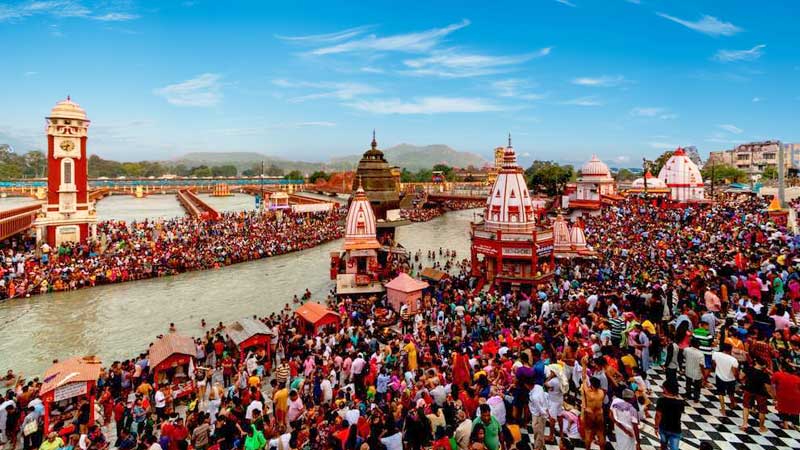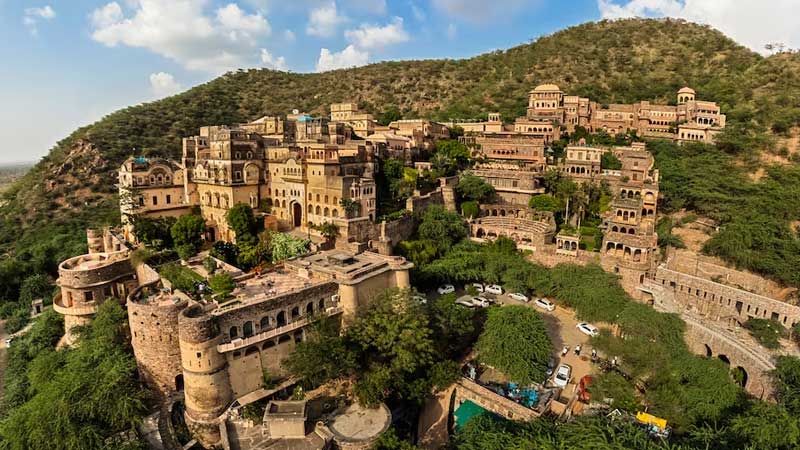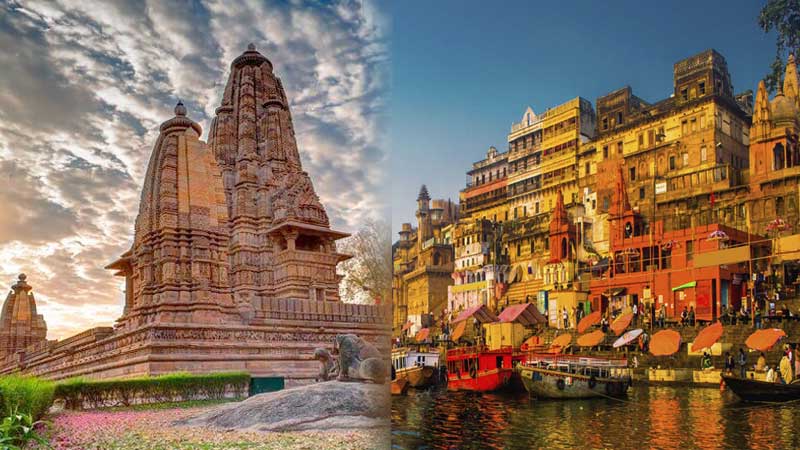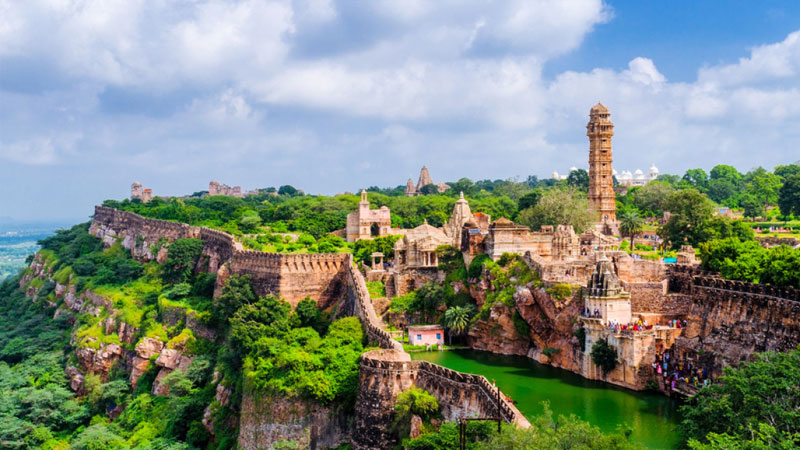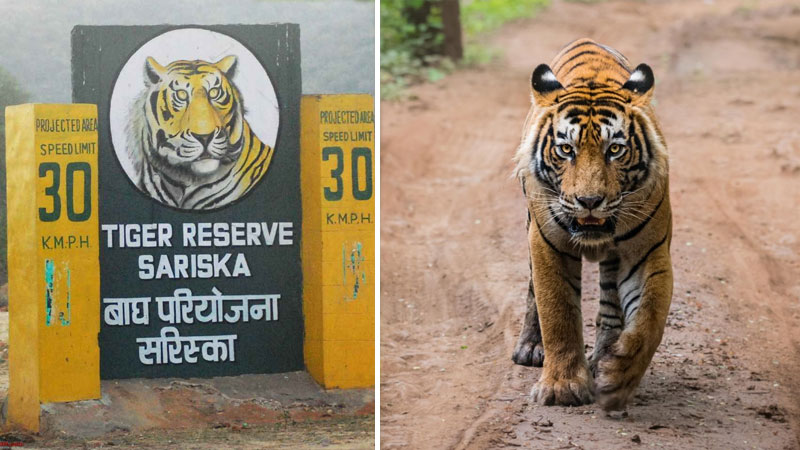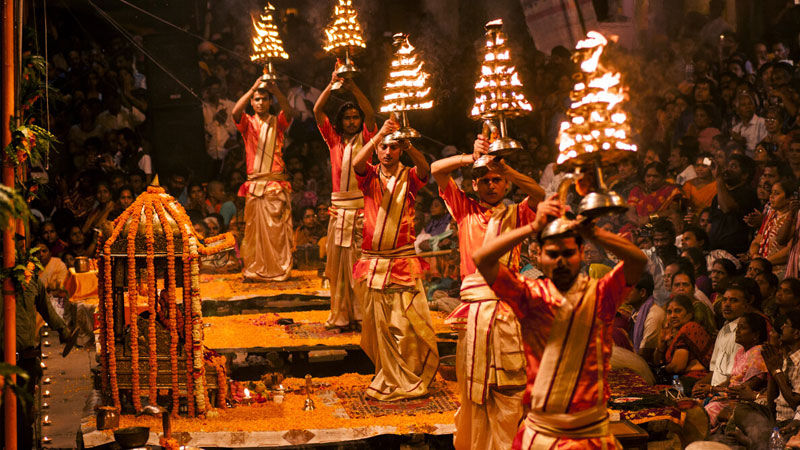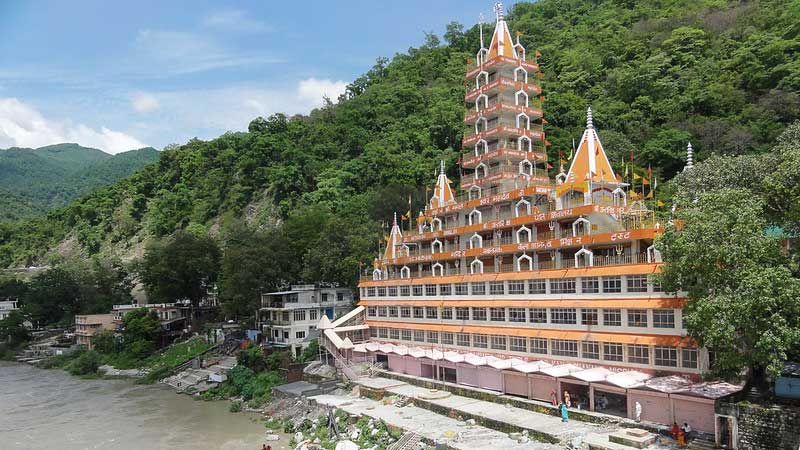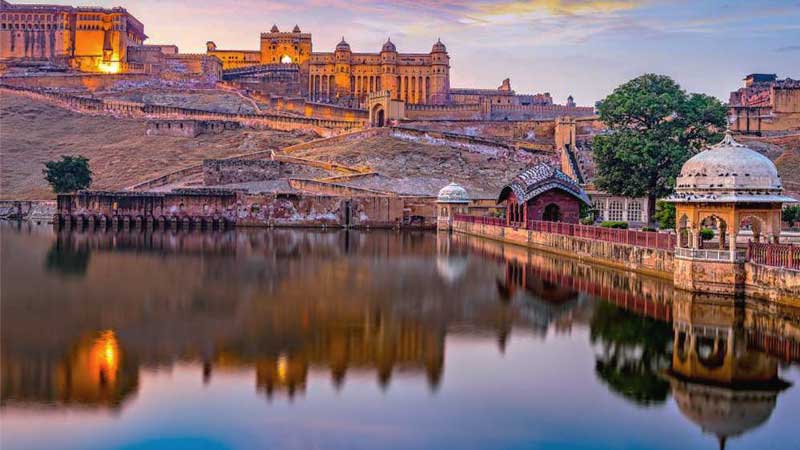Chittorgarh resonates with stories of Rajputana's bravery, pride, and passion. The bards of Rajasthan sing tales of courage and sacrifice recounting stories that are known to every child and adult in the city. Chittorgarh is named after its most imposing structure, the Chittorgarh Fort which stands atop a 180-meter high hill and is spread across 700 acres.
Chittorgarh Fort has had a tumultuous past. This bastion of the Rajputs has faced violent attacks thrice in its entire history. The first was in 1303 when the Sultan of Delhi, Ala-ud-din Khilji, who was enamored by Queen Padmini, launched an attack to abduct her. More than two centuries later, in 1533, it was Bahadur Shah, the Sultan of Gujarat, who caused immense destruction. Four decades later, in 1568, Mughal Emperor Akbar attacked and seized the fort. It was finally in 1616, under the rule of Mughal Emperor Jahangir that the fort was returned to the Rajputs.
Chittorgarh Fort
Chittorgarh Fort is a fitting symbol of the Rajput spirit. Set atop a 180 meter high hill and spread across 240 hectares, this majestic fort features in tales of courage, pride and romance that the bards of Rajasthan have been singing for centuries. Legend has it that the construction of the Chittorgarh Fort was begun by Bhim, one of the heroic Pandava brothers from Mahabharata, India’s eminent mythological epic. The fort houses several magnificent monuments, some unfortunately ravaged by the passage of time. The imposing structure takes one back to the days of conquests and tragedies, and its walls continue to ring with incredible tales of extraordinary men and women. A one-kilometer road weaves its way from the foothills to the summit, taking visitors through seven gates before arriving at Rampol (Gate of Ram). On the road between the second and the third gate, visitors get to see two ‘chattris’ (cenotaphs) built in honor of Jaimal and Kalla, heroes, who laid down their lives in the 1568 siege by Emperor Akbar. The main gate of the fort is Surajpol (Sun Gate).
Rani Padmini Palace
This palace plays an important role in Rajput history. The structure is built on the banks of a lotus pool and has a pavilion that provides privacy for the women of the royal family. Ala-ud-din Khilji, then Sultan of Delhi, spotted Queen Padmini’s reflection in the pool and was so besotted by her beauty that he led his forces in a battle to abduct her.
Ratan Singh Palace
The winter palace of the royal family, it overlooks a small lake. Although fairly rundown now, it is an interesting place to explore and attracts many tourists.
Rana Kumbha Palace
A ruined edifice of great historical and architectural interest, this is one of the most massive monuments in the fort of Chittor. The palace is believed to have underground cellars where Rani Padmini and other women committed ‘Jauhar’ (self-immolation).

